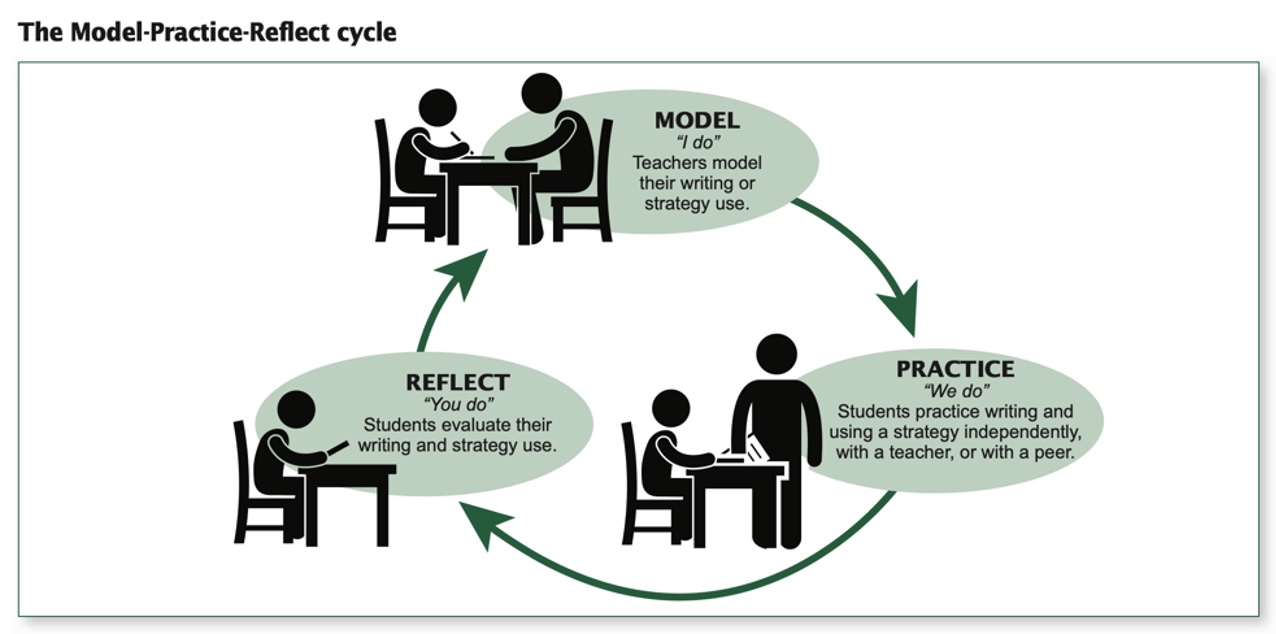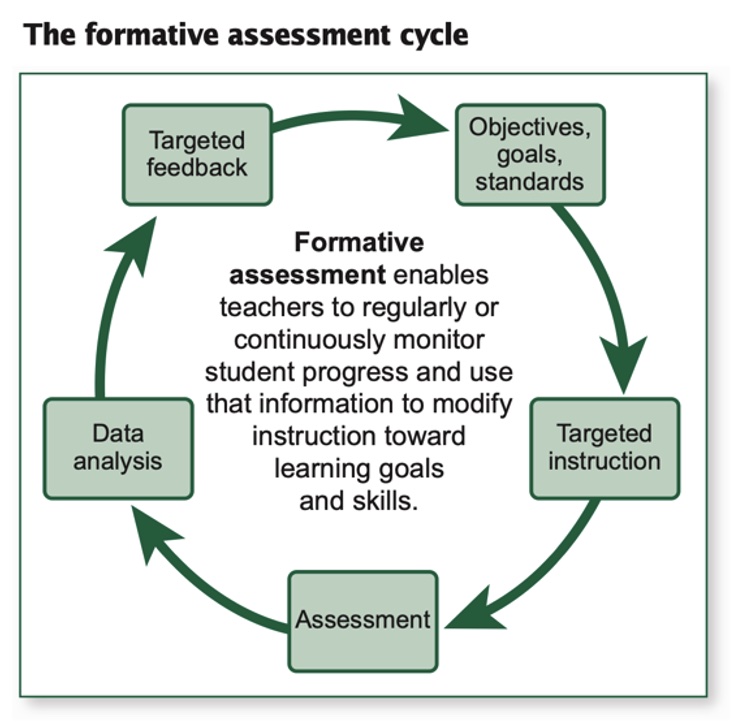For the past 20 years, the Institute of Education Science (IES) has funded research on a variety of educational practices that are evidence-based; in the past decade, these practices have been published as guides. In this blog, we review Teaching Secondary Students to Write Effectively (https://ies.ed.gov/ncee/wwc/PracticeGuide/22). The two figures in this blog appear in this practice guide and emphasize explicit instruction, as well as integrating reading and writing. Both of these strategies have sufficient evidence to recommend them.
The first recommendation with Strong Evidence is to explicitly teach appropriate writing strategies using a model-practice-reflect cycle (see figure below). These strategies focus on all aspects of writing, from planning and goal setting to drafting, evaluating, revising, and editing. Strategies, however, need to be oriented to specific audiences and be used to accomplish different purposes.
In content classes, one of the best strategies is to highlight specific words that are important to include in a student essay. With social studies content, these words may focus on important events, historical figures, or key locations. In science, the key words may address methods, types of data and data collection, or results and conclusions. Irrespective of content, the evidence indicates that effective writing instruction should begin with teachers modeling the strategy, which effectively gives students an example. After this phase, students can practice the strategy, on their own or with a peer, to generate independent writing. Key words allow students with disabilities or English learners, as well as low performing students, an opportunity to see, hear, speak, and write content words that convey important information. Supplemental instruction can also focus on word meaning (synonyms), pronunciation, and context.

Their second recommendation with Moderate Evidence is to integrate writing and reading so that key writing features can be emphasized. Concurrent with the strategy of highlighting key words, teachers can integrate writing and reading with choral reading, teacher read-aloud, or students reading independently. Text analysis can also be done with teachers explicitly pointing out writing strategies used by the author, which reflects another example of modeling.
Finally, in their third recommendation, the guide suggests that teachers use assessments from students’ writing to inform instruction, which has only Minimal evidence (a function of few studies offering a direct test of this strategy). See figure below. After explicit and targeted instruction, a variety of different types of data can be collected on student writing, analyzed, and then used to target individual feedback.

Conclusion: Two important evidence-based practices have been published in practice guides by the WWC for teaching writing to secondary students: Explicit instruction and integration of reading with writing. The procedure we propose that accomplishes both strategies in one fell swoop, is to highlight key content words. Teachers can then be assured they are using evidence-based practices in teaching secondary students. In WriteRightNow, we provide teachers a three-step process to incorporate both strategies into the writing process: Step 1 is to form a prompt (and supplemental reading materials to use in responding to the prompt). Step 2 is to highlight key content words that students should use in their responses. Step 3 involves the conditions for responding, providing feedback/reflections, and evaluating students’ responses.
